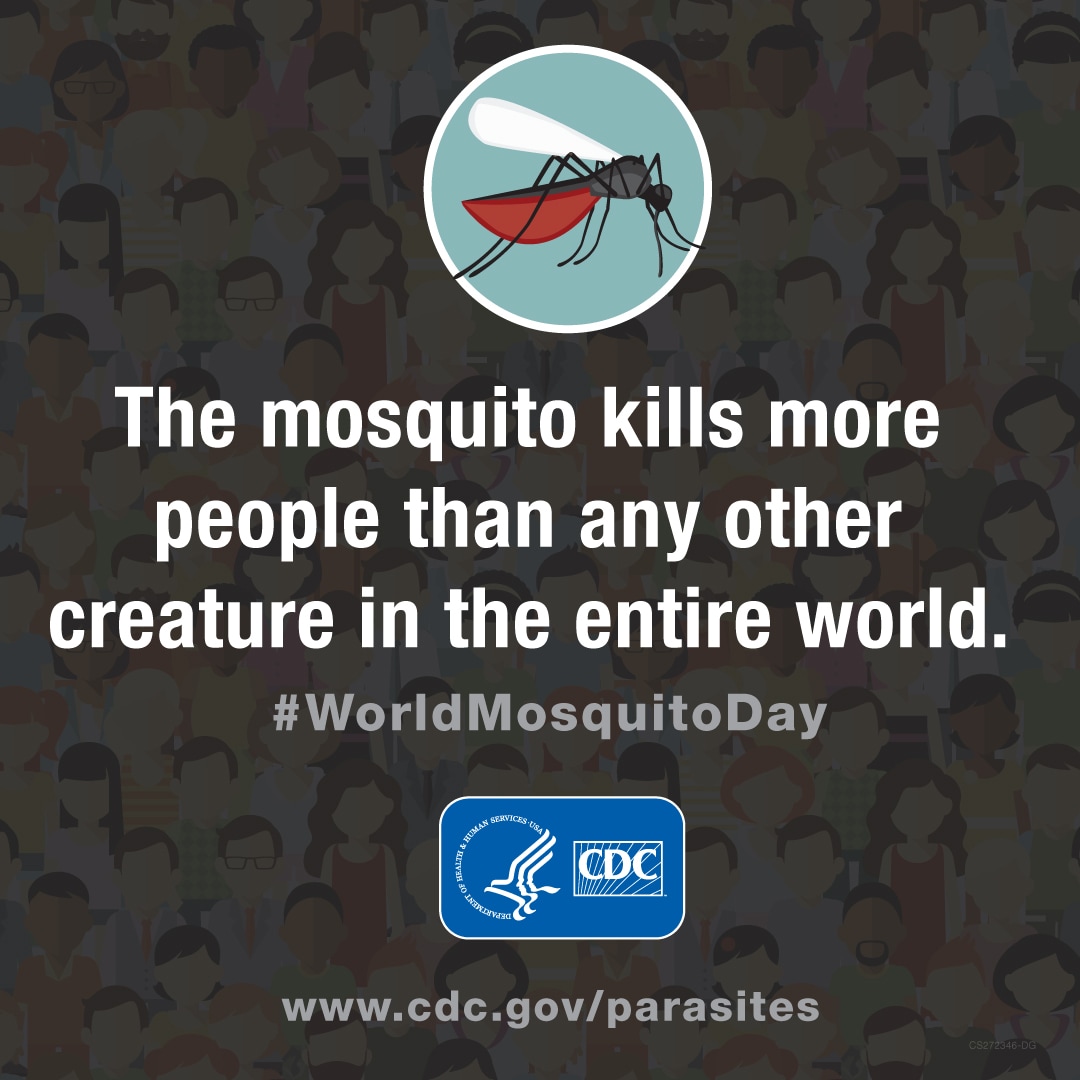Archive for August, 2019
Latest research: Ambient Particulate Air Pollution and Daily Mortality in 652 Cities
Thursday, August 22nd, 2019Ambient Particulate Air Pollution and Daily Mortality in 652 Cities
August 22, 2019
N Engl J Med 2019; 381:705-715
DOI: 10.1056/NEJMoa1817364
“……Conclusions
Our data show independent associations between short-term exposure to PM10 and PM2.5 and daily all-cause, cardiovascular, and respiratory mortality in more than 600 cities across the globe……..”
Microplastics: Another cause for concern in this troubled world?
Thursday, August 22nd, 2019WHO Microplastics Document 2019
“……..Background
Over the past few years, several studies have reported the presence of microplastics in treated tap and bottled water, raising questions and concerns about the impact that microplastics in drinking-water might have on human health. This report, which contains a summary of the evidence, key findings, recommendations and research needs, is the World Health Organization’s (WHO) first effort to examine the potential human health risks associated with exposure to microplastics in the environment. The focus of this report is on the potential human health impacts of exposure to microplastics through drinking-water. However, brief information on other routes of human exposure is included for context.
This report was informed by literature reviews undertaken on the occurrence of microplastics in the water cycle, the potential health impacts from microplastic exposure and the removal of microplastics during wastewater and drinking-water treatment. Throughout the report, WHO experts examined the quality and relevance of the studies they found. The report was also informed by reviews conducted by several major entities; these are referenced throughout the report.
As a category, microplastics encompass a wide range of materials with different chemical compositions, shapes, colours, sizes and densities. There is no scientifically-agreed definition of microplastics, although most definitions focus on composition and size. ………
“……Recommendations
Routine monitoring of microplastics in drinking-water is not recommended at this time, as there is no evidence to indicate a human health concern. Concerns over microplastics in drinking-water should not divert resources of water suppliers and regulators from removing microbial pathogens, which remains the most significant risk to human health from drinking-water along with other chemical priorities. As part of water safety planning, water suppliers should ensure that control measures are effective and should optimize water treatment processes for particle removal and microbial safety, which will incidentally improve the removal of microplastic particles.
However, for researchers, it would be appropriate to undertake targeted, welldesigned and quality-controlled investigative studies to better understand the sources and occurrence of microplastics in fresh water and drinking-water, the efficacy of different treatment processes and combinations of processes, and the significance
Executive summary xiii
of the potential return of microplastics to the environment from treatment waste streams including the application of sludge biosolids to agricultural land.
Measures should also be taken to better manage plastics and reduce the use of plastics where possible, to minimize plastic and microplastic pollution despite the low human health risk posed by exposure to microplastics in drinking-water, as such actions can confer other benefits to the environment and human well-being.
Research needs
To better assess human health risks and inform management actions, a number of research gaps need to be filled. With respect to exposure, there is a need to better understand microplastics occurrence throughout the water supply chain, using quality assured methods to determine the numbers, shapes, sizes, composition and sources of microplastics and to better characterize the effectiveness of water treatment. Research is also needed to better understand the significance of treatment-related waste streams as contributors of microplastics to the environment.
With respect to potential health effects, quality-assured toxicological data are needed on the most common forms of plastic particles relevant for human health risk assessment. Further, a better understanding on the uptake and fate of microplastics and nanoplastics following ingestion is needed.
Finally, given that humans can be exposed to microplastics through a variety of environmental media, including food and air, a better understanding of overall exposure to microplastics from the broader environment is needed.
Cases due to the wild poliovirus found in nature have decreased by more than 99% since 1988, from an estimated 350,000 cases then, to 33 reported cases in 2018
Wednesday, August 21st, 2019At a crossroads for Lyme and other serious tick-borne diseases in the U.S.
Wednesday, August 21st, 2019“…….In 2017, mosquito-borne West Nile virus, which currently infects about 2,000 people annually in the U.S. received $42 million in support from the U.S. National Institutes of Health. Lyme disease, with 20 times the number of reported cases, got half as much, a figure that has changed little in a decade. ……..Lyme disease from black-legged ticks is only a part of the problem. Cases of anaplasmosis and ehrlichiosis have soared, increasing sixfold since 2004. Malaria-like babesiosis, once limited to coastal islands, has been reported in 27 states; it makes Lyme disease far worse. The lone star tick, common in the South, has migrated to vast tracts of new territory as the climate has warmed, its bite causing a potentially severe meat allergy unheard of a decade ago. In 2017 the Asian longhorned tick became the first new tick species in the U.S. in 80 years. Now in 11 states, the ticks so infested five cows in North Carolina recently that they died of anemia from blood loss. The implications for agriculture could be dire because female longhorned ticks can clone themselves, vastly increasing birthrates. …..”
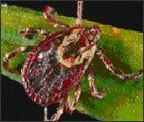
Where found: Widely distributed east of the Rocky Mountains. Also occurs in limited areas on the Pacific Coast.
Transmits: Tularemia and Rocky Mountain spotted fever.
Comments: The highest risk of being bitten occurs during spring and summer. Dog ticks are sometimes called wood ticks. Adult females are most likely to bite humans.

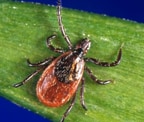
Where found: Widely distributed across the eastern United States.
Transmits: Borrelia burgdorferi and B. mayonii (which cause Lyme disease), Anaplasma phagocytophilum (anaplasmosis), B. miyamotoi disease (a form of relapsing fever), Ehrlichia muris eauclairensis (ehrlichiosis), Babesia microti (babesiosis), and Powassan virus (Powassan virus disease).
Comments: The greatest risk of being bitten exists in the spring, summer, and fall. However, adults may be out searching for a host any time winter temperatures are above freezing. Stages most likely to bite humans are nymphs and adult females.
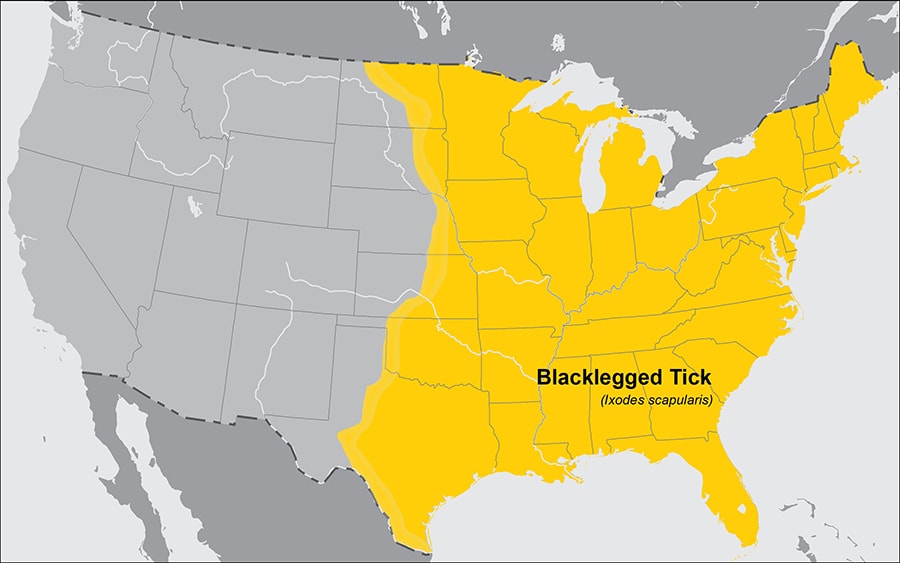
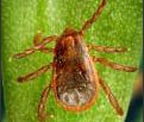 Where found: Worldwide.
Where found: Worldwide.
Transmits: Rocky Mountain spotted fever (in the southwestern U.S. and along the U.S.-Mexico border).
Comments: Dogs are the primary host for the brown dog tick in each of its life stages, but the tick may also bite humans or other mammals.
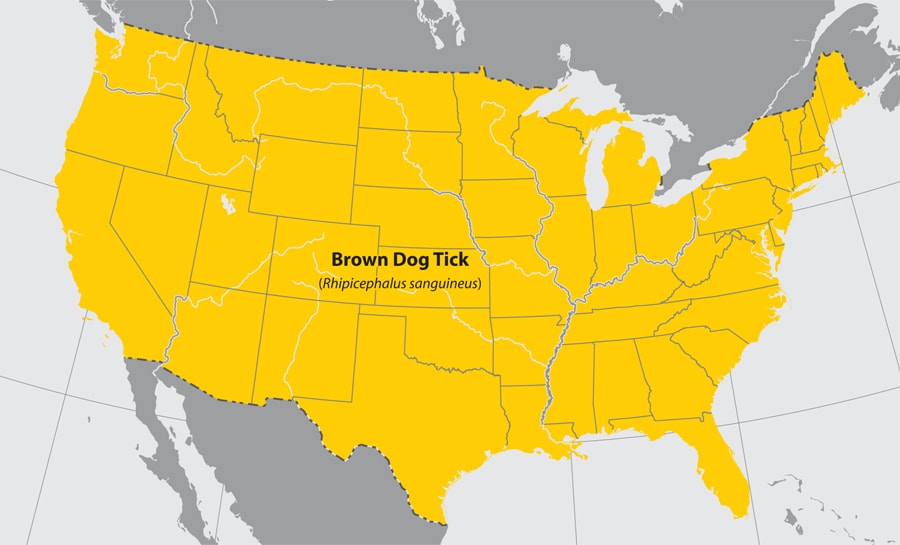
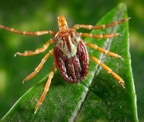
Where found: Coastal areas of the U.S. along the Atlantic coast and the Gulf of Mexico.
Transmits: Rickettsia parkeri rickettsiosis, a form of spotted fever.
Comments: Larvae and nymphs feed on birds and small rodents, while adult ticks feed on deer and other wildlife. Adult ticks have been associated with transmission of R. parkeri to humans.
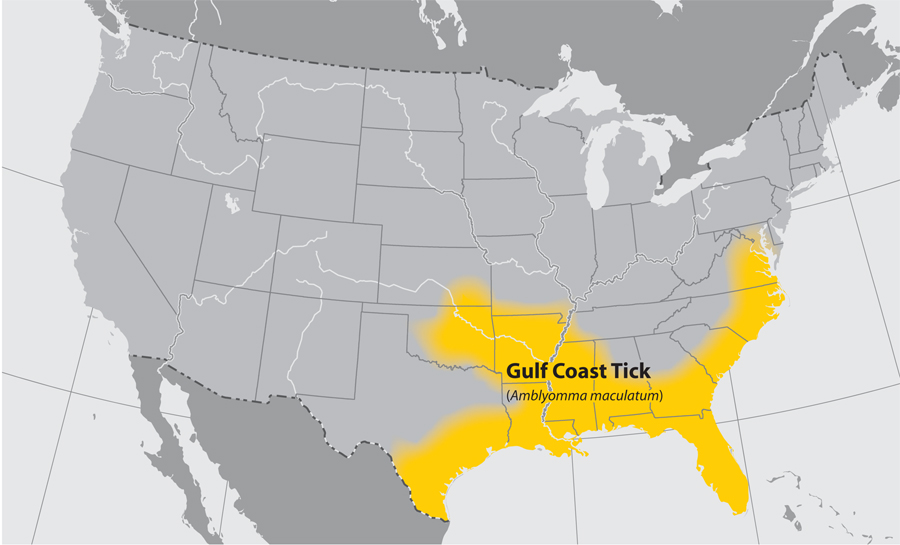
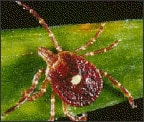
Where found: Widely distributed in the southeastern and eastern United States.
Transmits: Ehrlichia chaffeensis and Ehrlichia ewingii (which cause human ehrlichiosis), Heartland virus, tularemia, and STARI.
Comments: A very aggressive tick that bites humans. The adult female is distinguished by a white dot or “lone star” on her back. Lone star tick saliva can be irritating; redness and discomfort at a bite site does not necessarily indicate an infection. The nymph and adult females most frequently bite humans and transmit disease.
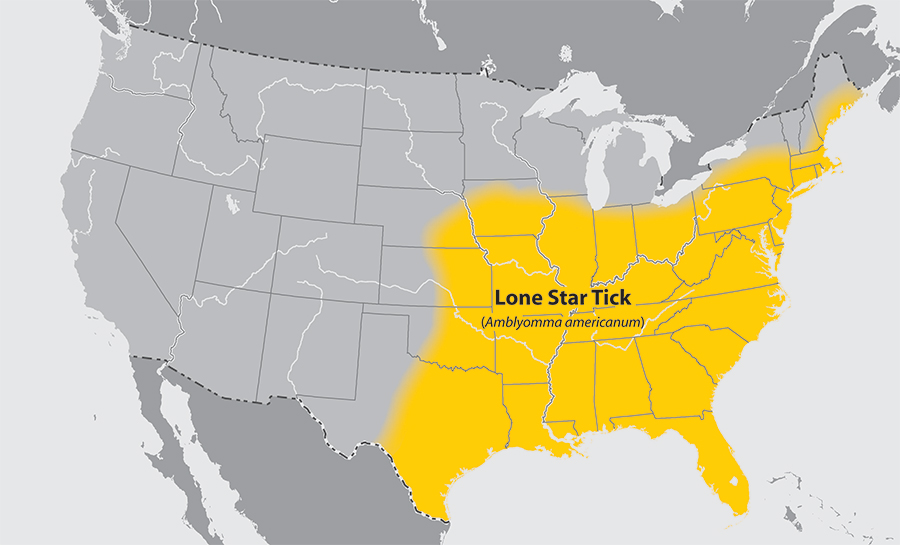
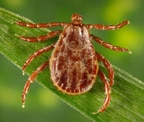 Where found: Rocky Mountain states and southwestern Canada from elevations of 4,000 to 10,500 feet.
Where found: Rocky Mountain states and southwestern Canada from elevations of 4,000 to 10,500 feet.
Transmits: Rocky Mountain spotted fever, Colorado tick fever, and tularemia.
Comments: Adult ticks feed primarily on large mammals. Larvae and nymphs feed on small rodents. Adult ticks are primarily associated with pathogen transmission to humans.
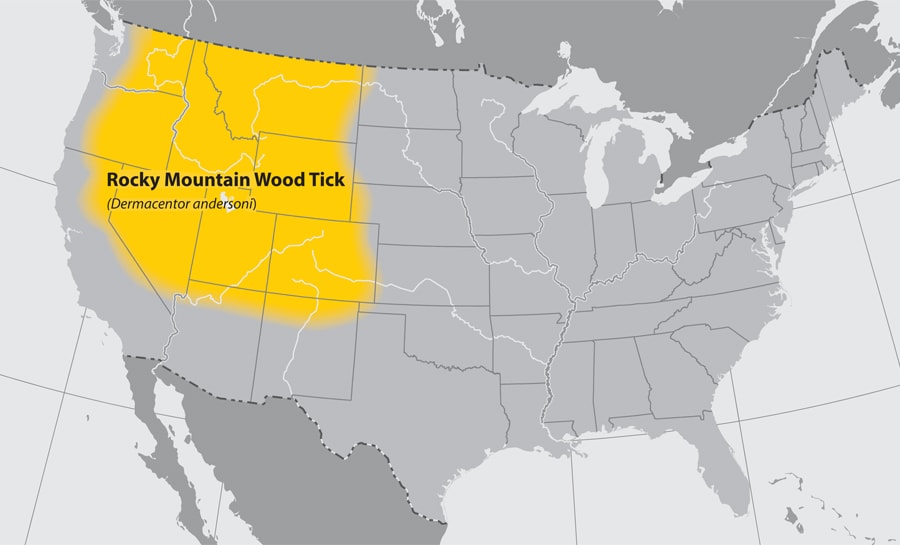
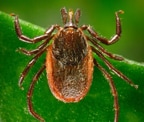 Where found: Along the Pacific coast of the U.S., particularly northern California.
Where found: Along the Pacific coast of the U.S., particularly northern California.
Transmits: Anaplasmosis and Lyme disease.
Comments: Nymphs often feed on lizards, as well as other small animals. As a result, rates of infection are usually low (~1%) in adults. Stages most likely to bite humans are nymphs and adult females.
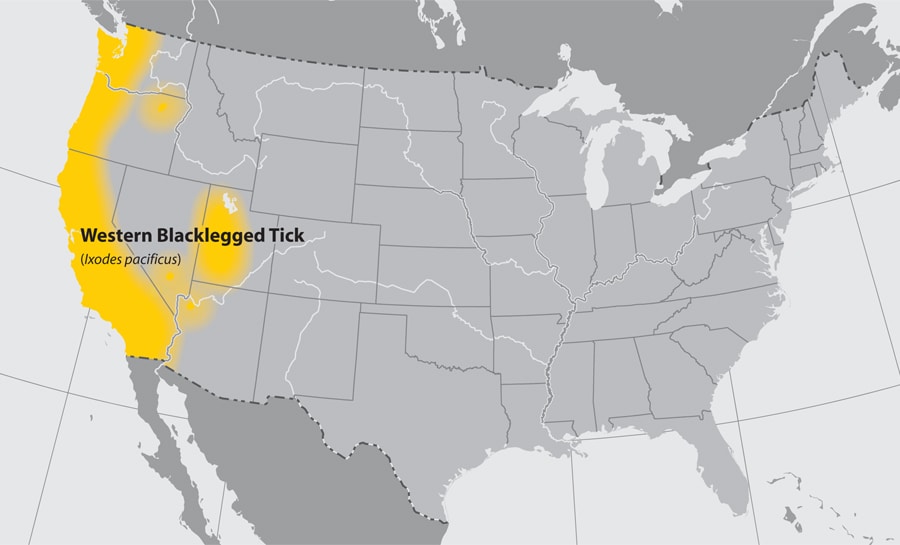
Rohingya: Panic in the world’s largest refugee settlement
Tuesday, August 20th, 2019‘……“I will mix poison in the food. I will kill myself, my children, my entire family if I am forced to leave,” said Fatima Noor, a 50-year-old resident of Camp 24, one of three camps from which the first group of eligible returnees is due to be drawn……’
August 20: World Mosquito Day
Tuesday, August 20th, 2019Canary Islands: Gran Canaria Fire has destroyed nearly 25,000 acres on the island and forced the evacuation of 9000
Tuesday, August 20th, 2019Thailand had the world’s second-highest rate of road fatalities per capita and it’s #1 in per capita motorcycle deaths
Tuesday, August 20th, 2019ISIS is down but it’s not out!
Tuesday, August 20th, 2019“….Over the past several months, ISIS has made inroads into a sprawling tent camp in northeast Syria, and there is no ready plan to deal with the 70,000 people there, including thousands of family members of ISIS fighters. American intelligence officials say the Al Hol camp, managed by Syrian Kurdish allies with little aid or security, is evolving into a hotbed of ISIS ideology and a huge breeding ground for future terrorists. The American-backed Syrian Kurdish force also holds more than 10,000 ISIS fighters, including 2,000 foreigners, in separate makeshift prisons.
At Al Hol, the Syrian Kurds’ “inability to provide more than ‘minimal security’ at the camp has allowed the ‘uncontested conditions to spread of ISIS ideology’ there,” said the inspector general’s report, which was prepared for the Pentagon, the State Department and the United States Agency for International Development…..”


